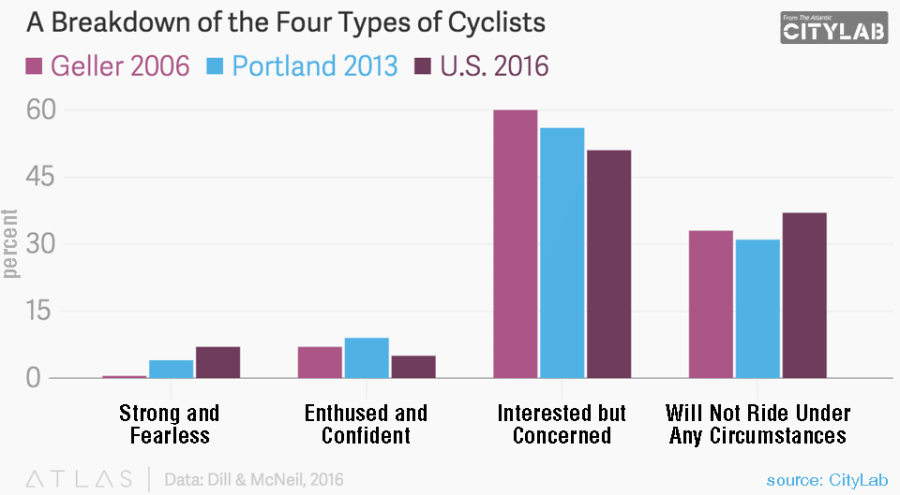Our Common Ground: A Foundation for Mutual Understanding
We Know…
- In Newark, only about 3 out of 100 of people use bicycles to commute to work.
- Studies indicate that between 50-60% of individuals nationwide consider themselves “interested but concerned” regarding bicycling (more than 10% consider themselves “confident” or “fearless” riders). This means that there are a lot of people out there who, with support, might eventually come to use and regard a bicycle as a common form of transportation.
- Bicyclists are also pedestrians and motorists at various times. The inverse is not true for motorists.
- Although improving, our current transportation infrastructure was not designed or well suited for bikes.
- There are many examples of communities around the world where biking is a ubiquitous and normal mode of transportation.
- Bicycling is safe.
- Bicycling, as an alternative to automotive transportation,
- is good for the environment.
- is good for individual physical and mental health.
- is good for local economies.
- creates community connections.
- Bikes reduce traffic congestion and require less parking space than cars.
We Believe…
- Newark has incredible potential to become a place where bicycling, as an everyday mode of travel, is normal. It is relatively flat, sunny, temperate, self-contained, and visually interesting.
- Because Newark’s transportation infrastructure was not designed with the needs of bicyclists in mind, we must expect less than perfect and continuingly evolving encounters between bikes, cars, and pedestrians while our infrastructure catches up to meet the demand for bicycling.
- Bicycle infrastructure should be low stress and high comfort and should feel safe for people of all ages (under 8 years to 80+ years of age) and biking experience. We introduce risks to people on bikes, people in cars, and people who are walking when we force bikes onto infrastructure that does not satisfy those requirements.
- Unless bicycle infrastructure works for the low-confidence rider, bicyclists should be allowed on sidewalks. When continuous, well-marked infrastructure exists, most riders will choose it over sidewalks. Those who choose the sidewalk over such bicycle infrastructure will be the low-confidence (inexperienced, older or younger) rider.
- There is a learning curve to knowing how to make everyday bicycling comfortable and easy.
- Bikes will not entirely replace other modes of transportation, but they can be an important and beneficial part of the transportation landscape.
- It is possible to create civility and respect among all transportation modes in Newark.
We Want…
- Safe and equitable routes for all modes of transportation throughout Newark.
- A ubiquitous, low-stress, high-comfort bicycle network throughout Newark that connects to bikeable routes beyond the bounds of the city.
- Safe bicycle routes to schools and workplaces in Newark from surrounding areas.
- Safe bicycle routes from downtown Newark to local mountain-biking recreation areas.
- An active transportation (e.g., bicycling, walking) mode share of 40%.
- A universal understanding of bikes as a “normal” mode of purposeful transportation.
- A city center that provides all the typical amenities required for residents to accomplish errands and entertainment by use of active transportation.
- Newark to become the best small city for biking in the Mid-Atlantic Region.
